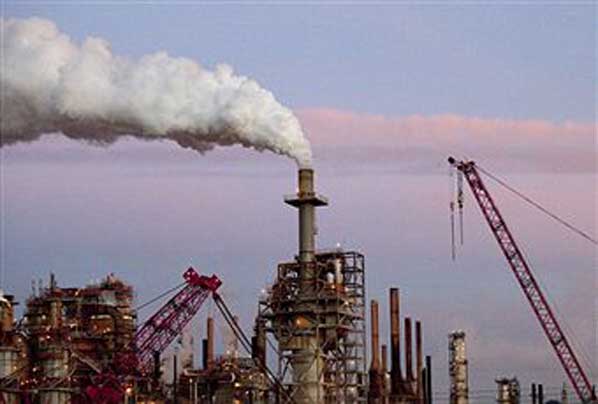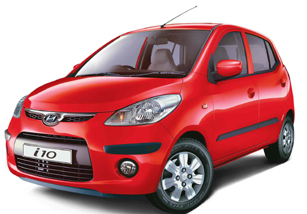Ramachandra Guha in a wonderful essay titled An Anthropologist Among Marxists writes about what he calls a “possibly, apocryphal anecdote.” As he writes “When Indira Gandhi was assassinated, her ashes were sent to different cities to allow public homage. When her ashes lay lay in Calcutta’s Government House they were visited one evening by the state’s finance minister. In the previous year this man had delivered no less than two hundred and sixty-two speeches on the discrimination against West Bengal in the release of funds from the central treasury. As the minister came out of the Government House, he was asked how he felt when confronting the mortal remains of his most resolute political opponent. He replied in character: Centre Kom Diye Che (the centre has again given us less than our rightful share).”
In another essay titled Political Leadership Guha writes “Jyoti Basu’s government, it was said, began every discussion on federalism with the words, “Centre kom diye che.”
The communists who ruled West Bengal for more than three decades liked to blame all the problems of the state on the central government, which they felt did not give the state a fair share of the funds.
Dear Reader, if you are wondering why am I talking about West Bengal and its politics in a piece which has the term “interest-rates” in the headline, allow me to explain. Over the last few years, everyone from politicians to businessmen to bankers have called for interest rates to be cut as a solution for reviving economic growth in India. The assumption is that at lower interest rates people will borrow and spend more and that will lead to economic growth.
In that sense, these individuals are not very different from the communist politicians of West Bengal for whom “Centre kom diye che” was an explanation for all the problems of the state. Along similar lines, individuals calling for a cut in interest rates seem to believe that higher interest rates are a major reason for the slowdown in economic growth, and a cut can really get people borrowing and spending all over again.
The former finance minister P Chidambaram was a major propagator of this belief. His successor Arun Jaitley has carried of where Chidambaram left. Other than the politicians, bankers have also regularly asked the Reserve Bank of India (RBI) to cut interest rates.
Today with the RBI deciding to keep the repo rate unchanged at 8% in the fourth bi-monthly monetary policy, the interest-rate-wallahs will be at it again. Repo rate is the rate at which the RBI lends to banks.
The RBI had its reasons for not changing the repo rate. As it pointed out in a statement “Since June, headline inflation has ebbed…The most heartening feature has been the steady decline in inflation excluding food and fuel…to a new low. With international crude prices softening and relative stability in the foreign exchange market, some upside risks to inflation are receding. Yet, there are risks from food price shocks as the full effects of the monsoon’s passage unfold, and from geo-political developments that could materialise rapidly.”
Nevertheless, over the next few days you will see bankers, real estate company owners, industry lobbies and possibly even the finance minister Jaitley, wondering why the RBI did not cut the repo rate, to get lending going again.
The most recent occasion when the interest-rate-wallahs came out in the open was when the bankers asked the RBI to cut the repo rate, after the growth in bank loans fell to a five year. As on September 5, 2014, the one year growth in bank loans stood at 9.7%. During the same time last year the number was at a significantly higher 17.9%.
The belief as explained earlier is that at lower interest rates people will borrow more. But as the American baseball coach Yogi Berra once famously said “In theory there is no difference between theory and practice. In practice there is.”
Lower interest rates do not always lead to more borrowing and revival of economic growth. An excellent example of this is what has happened in the aftermath of the financial crisis that broke out in September 2008. Western central banks brought down interest rates to very low levels in the hope that people will borrow and spend more, and help revive economic growth. But that did not happen. All it did was lead to many stock market bubbles all over the world.
Closer to home let’s take a look at car sales. The sales have revived from May 2014, after having continuously fallen for nine months. In August 2014, car sales grew by 15.16%, in comparison to the same period last year. This has happened without much change in interest rates. Why is that the case? Let’s try and understand this through a simple example. Let’s assume that an individual takes a car loan of Rs 4 lakh to be repaid over a period of five years at an interest rate of 10.5%. The EMI on this loan works out to around Rs 8,598.
Let’s say that interest rates were to come down by a massive 100 basis points (one basis point is one hundredth of a percentage)to 9.5%, all at once. At this interest rate, the EMI would work out to around Rs 8,401 or around Rs 200 lower than the earlier EMI. Now how many people will go and buy a car just because the EMI is now lower by Rs 200?
Anyone who has the ability to repay an EMI of Rs 8,401 can also repay an EMI of Rs 8,598. Hence, what people look at while taking on a loan is their ability to service the EMI. This involves at looking at factors like job prospects, the prospects of the company the individual works for and some idea of how he expects the broader economy to do. A major reason for the revival in car sales has been the election of Narendra Modi as the prime minister of India.
People have bought his election slogan “acche din aane waale hain” and hence, have taken on car loans and bought cars because for now they believe that their future will be better than their past. Interest rates have had no role to play in the revival of car sales.
Let’s consider real estate next. Here again the belief is that if interest rates are cut people will borrow and buy homes. This logic again doesn’t really hold. Home prices are now way beyond what an average Indian can afford. Let’s consider the city of Mumbai. A July 2014 report in The Times of India quotes Pankaj Kapoor of property research firm Liases Foras as saying “In Mumbai, the average cost of a flat is Rs 1.2 crore.”
An estimate made by Forbes puts the average income of a Mumbaikar at $5900 or around Rs 3.54 lakh (assuming $1 = Rs 60) per year. This means it would need nearly 34 years of annual income (Rs 1.2 crore divided Rs 3.54 lakh) for an average Mumbaikar to buy a home in this city currently. What this tells us very broadly that homes in Mumbai are very expensive. Similar calculations done for other parts of the country are most likely to show similar results.
Hence, the point is that homes in most parts of the country are now much more expensive than what most Indians can afford. Given this, lower EMIs because of lower interest rates aren’t going to help much. The real estate market has priced itself out.
This was the demand side of things. Now let’s look at what the economists call the supply side. Investments made by corporates have fallen rapidly over the last few years. As Sanjeev Sanyal of Deutsche Bank Market Research writes in a research report titled India 2020: The Road to East Asia and dated September 2014, “Gross Fixed Investment by the private corporate sector dropped from a peak of 14.3% of GDP in 2007-08 to 8.5% of GDP in 2012-13 (and likely even lower in 2013-14) with investments in machinery and equipment being particularly hit.”
The interest-rate-wallahs would like us to believe that this fall in investment has primarily been because of the high interest rates that have prevailed over the last few years. Nevertheless is that really the case? As Rahul Anand and Volodymyr Tulin write in an IMF Working Paper dated March 2014 and titled Disentangling India’s Investment Slowdown “Our results suggest that real interest rates account for only one quarter of the explained investment downturn. However, we find that standard macro-financial variables (interest rates, external demand, relative prices, global financial market volatility and others) do not fully explain the recent investment slump. Finally, using the new measure of economic policy uncertainty, the results suggest that heightened uncertainty and deteriorating business confidence have played a key role in the recent investment slowdown.”
Hence, if the current government really wants to get corporate investment going it needs to bring in a lot of much delayed structural reform. Also, it is worth remembering here that a some of the major business groups in India have already borrowed a lot of money and are having tough time paying interest on the debt they already have. Hence, where is the question of borrowing more?
Further, it also needs to be remembered that financial savings in India have fallen dramatically over the last few years. The latest RBI annual report points out that “the household financial saving rate remained low during 2013-14, increasing only marginally to 7.2 per cent of GDP in 2013-14 from 7.1 per cent of GDP in 2012-13 and 7.0 per cent of GDP in 2011-12…the household financial saving rate [has] dipped sharply from 12 per cent in 2009-10.”
Household financial savings is essentially the money invested by individuals in fixed deposits, small savings scheme, mutual funds, shares, insurance etc. The household financial savings were at 12% of the GDP in 2009-10. Since then, they have fallen dramatically to 7.2% in 2013-14. A major reason for the fall has been the high inflation that has prevailed since 2008.
The rate of return on offer on fixed income investments(like fixed deposits, post office savings schemes and various government run provident funds) has been lower than the rate of inflation. This has led to people moving their money into investments like gold and real estate, where they expected to earn more. If the household financial savings number has to go up the rate of interest on offer on fixed income investments needs to be higher than the rate of inflation. Only recently has the consumer price inflation fallen to levels below the rate of return available on fixed income investments. This situation has to be allowed to persist if the financial savings of India are to increase.
To conclude, calling for lower interest rates on almost every occasion is not a solution to anything. It is time the interest-rate-wallahs understand this.
(Vivek Kaul is the author of Easy Money trilogy. He tweets @kaul_vivek)




